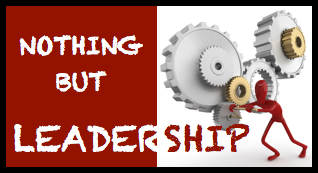Do People REALLY understand what you do?
Does your company have a Vision/Mission Statement that you clearly understand … and everyone knows who it belongs to?
Last week, we talked about the proposition that Leadership = Communication and I shared a communication matrix with you to help you start on a Communication Action Plan.
There’s no doubt that communication stands tall in the pantheon of business leadership, and we all probably think we’re pretty good at it.
We can walk, talk, dictate, speak and even string together a few intelligible sentences.
We chat with our troops, talk to our customers and vendors, share information with colleagues and shareholders.
We hold meetings, BBQ’s and off-sites to talk about what’s going on.
We’re all pretty good at communication . . . or are we?
What is Communication … Really?
The inimitable Mr. Webster focuses on the transmission of thoughts and ideas, as if the means of communicating, or the act itself, constitutes “communication”.
Yet, when you peruse a thesaurus for synonyms, you get words like, “communion”, “connection”, “conversation” and “interchange”, as well as “transmission” and “advisement”.
When you think of “advisement” and “transmission”, it’s more about talking than conversing, while with “connection” and “conversation”, you expect a collaborative, two-way exchange.
The Great Communicator
[pullquote]“When planning for a year, plant corn. When planning for a decade, plant trees. When planning for life, train and educate people.”~ Chinese Proverb[/pullquote]
President Reagan was known as the “Great Communicator” precisely because he could capture the essence of the point he wanted to make in clean, simple language that connected with people on an emotional level.
His delivery was smooth and practiced and Americans always thought they knew where he stood.
In President Reagan’s farewell address to the nation, he acknowledged the mantle of the “Great Communicator” but said “I never thought it was my style or the words I used that made a difference: it was the content. I wasn’t a great communicator but I communicated great things . . . . “
Take a look at Warren’ Buffett’s 2010 letter to Berkshire Hathaway shareholders as another example of straightforward communication.
Start by Looking at Your Mission Statement
In thinking about “communicating great things”, you’ve probably heard many times that your company should have a Vision and/or Mission statement.
Here are two examples of Mission statements from well-known companies.
“Outstanding service and solutions through dedication and excellence.”
“Guided by relentless focus on our five imperatives, we will constantly strive to implement the critical initiatives required to achieve our vision. In doing this, we will deliver operational excellence in every corner of the Company and meet or exceed our commitments to the many constituencies we serve. All of our long-term strategies and short-term actions will be molded by a set of core values that are shared by each and every associate.”
Got Any Idea of What These Companies Actually Do?
[pullquote]Every week, we’re sharing valuable and practical productivity tips to help you BECOME a better leader. Why not get these valuable tips and techniques sent directly to your inbox every week so you don’t miss them?[/pullquote]
There’s nary a clue about the identity of these companies, is there?
These are not very good examples of communication because they are either too “Mom and apple pie”, or dance between pomposity and verbosity, as in the second example. They’re innocuous and impersonal, and while they may sound righteous, they stand for nothing.
Where Do These Statements Come From?
Most Vision and Mission statements are generally derived in a conversation about the “purpose” of your company.
Why are we here?
What are we trying to accomplish? How will people remember us when we’re gone? Will they? It’s about you, digging deep to focus on why you’re coming to work each day and busting it from dawn until dusk.
Like Indiana Jones chasing the Holy Grail, some business consultants are obsessed with Vision and Mission Statements.
While they can serve as cornerstones of the company’s “Strategery”, their value is in direct proportion to the breadth and depth of the strategic conversation about what’s really important and what differentiates their view of the world.
Vision vs. Mission … What’s the Difference?
In simple terms, a Vision Statement seeks to “communicate” the core values and purpose of an organization, and looks to the future, to “what is possible” rather than “what is”. It’s more about inspiration than perspiration.
The Mission Statement says exactly what you do – now – and like a good “elevator speech”, can be recited in the time it takes you to get from the 1st to the 10th floor. It should use clear, muscular language to tell people succinctly “who you are” and “what you do”.
It’s what the perspiration is all about.
How about these examples?
“We fulfill dreams through the experience of motorcycling, by providing to motorcyclists and to the general public an expanding line of motorcycles and branded products and services in selected market segments.
“People love our clothes and trust our company. We will market the most appealing and widely worn casual clothing in the world. We will clothe the world.
These make a lot more sense, don’t they? And, it’s not too hard to see the mission of Harley-Davidson or Levi Strauss in these words. Contrarily, did you guess correctly about Hughes Supply and Albertson’s in the earlier two examples?
Make It Good – and Hang It High!
Conclusion?
You can stop revising your Vision and Mission statements when you can post them on the walls throughout the company and be as proud of them tomorrow as you are today.
No one snickers when they read them; everyone in the company understands them, can recite them and embraces them as the embodiment of what they’re doing.
Customers, vendors and shareholders will clearly understand what you do … why you’re here … and see the mission consistently throughout your organization.
That’s communication!


